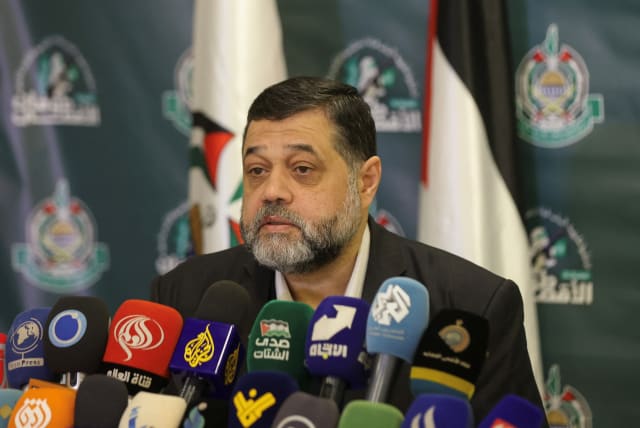As Israel and Hamas continue to accuse each other of sabotaging a ceasefire plan in Gaza, a top senior Hamas official has said that “no one has an idea” how many of the 120 remaining hostages kidnapped on 7 October are still alive.
The fate of the 120 remaining hostages in Gaza is crucial to any deal to end the protracted and bloody conflict between Israel and Hamas.
In an interview with CNN at the Lebanese capital Beirut, Hamas spokesperson and political bureau member Osama Hamdan, said;
“I don’t have any idea about that (number of hostages alive). No one has an idea about this,” he said, alleging that the Israeli operation to free four of the hostages on Saturday resulted in the deaths of three others, including an American citizen.
In April, Hamas informed international mediators that it couldn’t comply with Israel’s demand to release 40 of the remaining hostages in the initial phase of a deal, including all the women as well as sick and elderly men, because it did not hold 40 living hostages who match those criteria for release.
Speaking about the latest proposal on the table, an Israeli plan that was first publicly announced by US President Joe Biden late last month, Hamdan said it did not meet the group’s demands for an end to the war.
The US-backed ceasefire plan that was approved by the United Nations Security Council on Monday lays out a phased approach.
In the first phase, there would be a six-week ceasefire in which some hostages would be exchanged for Palestinian prisoners and the Israeli military would pull out of populated areas in Gaza.
The second phase – a permanent end to the war and full Israeli withdrawal from Gaza – would only be implemented after further negotiations between the two sides.
“Hamas needed a clear position from Israel to accept the ceasefire, a complete withdrawal from Gaza, and let the Palestinians to determine their future by themselves, the reconstruction, the (lifting) of the siege … and we are ready to talk about a fair deal about the prisoners exchange,” CNN quoted Hamdan as saying.
Negotiations around the US-backed proposal hit a road block on Wednesday when Hamas presented its response to the document, 12 days after receiving it.
Expressing frustration, Blinken noted Hamas’s decision to submit “numerous changes,” with some exceeding their previously stated positions.
“Some of the changes are workable. Some are not,” Blinken said at a news conference in Doha on Wednesday.
Hamdan said that the duration of the ceasefire was a sticking issue for Hamas, which is concerned that Israel has no intention of following through with the second phase of the deal.
“The Israelis want the ceasefire only for six weeks and then they want to go back to the fight, which I think the Americans, till now, they did not convince the Israelis to accept (a permanent ceasefire),” CNN quoted Hamdan as saying, adding that he believes the US needs to convince Israel to accept a permanent ceasefire as part of the deal.
Hamdan also blamed Israel for the mental state of four hostages recently rescued, after a doctor said they were subject to constant physical and emotional abuse while in captivity.
“I believe if they have mental problem, this is because of what Israel have done in Gaza. Because (no one can) handle what Israel is doing, bombing each day, killing civilians, killing women and children … they saw that (with) their own eyes,” he said, adding that comparing images of the hostages taken before and after the eight-months long captivity shows “they were better than before”
When asked if Hamas attacking Israel last October, Hamdan blamed the situation on Israel, saying the attack was “a reaction against the occupation.”
“The one who is in charge or responsible for that is (the Israeli) occupation. If you resist the occupation, (they) will kill you, if you did not resist the occupation, (they) also will kill you and deport you out of your country. So what we are supposed to do, just to wait?” he asked.
He also rejected a recent Wall Street Journal report that claimed Hamas’s Gaza leader Yahya Sinwar welcomed Gazan civilian deaths as a “necessary sacrifice.”
“It was fake messages done by someone who is not Palestinian and (it) was sent (to the) Wall Street Journal as part of the pressure against Hamas and provoking the people against the leader,”


